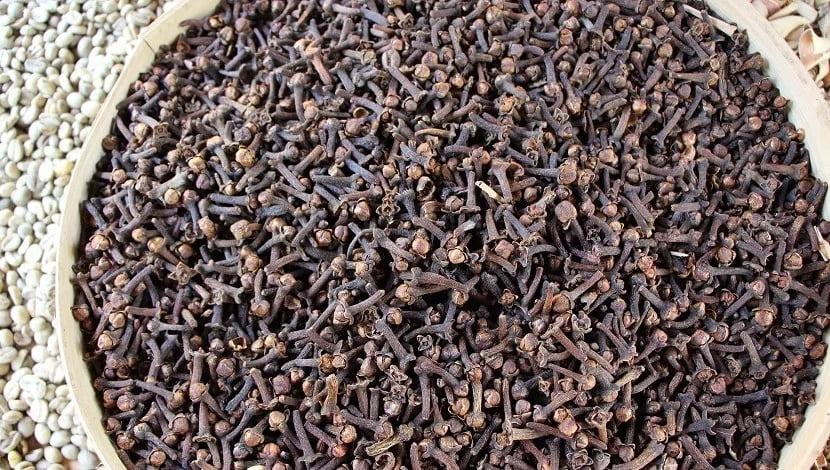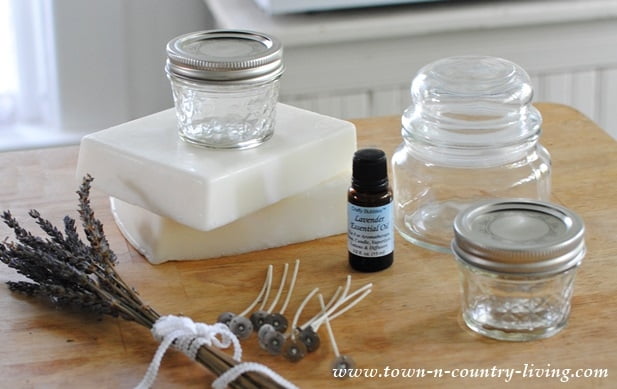Soy wax has gained a lot of attention in recent years as a popular choice for candle making. Many people are turning to soy wax for their candle crafting endeavors due to its numerous benefits and eco-friendly nature. In this article, we will explore the question “Is soy wax good for candle making?” and delve into the many reasons why it has become a preferred option for homemade candle enthusiasts.
Soy wax is good for candle making because of its natural origins and clean-burning properties. Unlike traditional paraffin wax, soy wax is derived from soybean oil, making it a renewable and sustainable resource. As the demand for environmentally friendly products continues to rise, soy wax has emerged as an attractive alternative for those looking to create candles without harmful additives or chemicals.
In the following sections, we will take an in-depth look at what exactly soy wax is and its origins, as well as the specific benefits it offers when used in candle making. We will also provide a comprehensive guide on how to properly use soy wax to craft homemade candles, along with tips for achieving the best results.
Additionally, we will address any common misconceptions about soy wax and explore its environmental advantages. By the end of this article, you will have a thorough understanding of why soy wax is not only good but excellent for candle making purposes.
What Is Soy Wax
Soy wax is a natural, renewable resource that is derived from soybean oil. It is considered an eco-friendly alternative to traditional paraffin wax, which is derived from petroleum.
Soy wax is created through a process of hydrogenation, in which the naturally occurring oils in soybeans are transformed into a solid form suitable for use in candle making. This process results in a product that burns cleaner and slower than paraffin wax, making it a popular choice among environmentally conscious consumers.
There are several key characteristics of soy wax that make it particularly well-suited for candle making. For one, soy wax has a lower melting point than paraffin wax, which means it can be burned at a cooler temperature and for longer periods of time.
Additionally, soy wax is known for producing minimal soot and no toxic fumes when burned, creating a healthier and more pleasant environment for those enjoying the candle. Furthermore, soy wax has the added benefit of holding fragrances well, providing a strong scent throw without compromising air quality.
If you are considering using soy wax for your candle making endeavors, it’s important to understand how to properly handle and utilize this unique material. Here are some steps to follow when using soy wax for crafting homemade candles:
- Select high-quality soy wax specifically designed for candle making
- Use appropriate molds or containers suited for soy wax candles
- Determine the right wick size and type for optimal burning
- Melt the soy wax to the correct temperature and add fragrance oils or dyes as desired
- Pour the melted soy wax into molds or containers and allow it to cool and set properly
When used correctly, soy wax can result in beautifully crafted candles with superior burning qualities and environmental benefits. Is soy wax good for candle making? The resounding answer seems to be yes, especially for those seeking an eco-friendly and sustainable option.
Benefits of Soy Wax in Candle Making
Soy wax is a popular choice for candle making due to its numerous benefits and advantages over other traditional candle making waxes. Here are some of the reasons why soy wax is good for candle making:
- Clean Burning: One of the main advantages of soy wax is that it produces less soot and toxins compared to paraffin wax, making it a healthier option for indoor use.
- Renewable and Sustainable: Soy wax is derived from soybean oil, which is a renewable resource, making it an environmentally friendly choice. Additionally, soy wax candles can be easily cleaned with soap and water, allowing the containers to be reused or recycled.
- Longer Lasting: Candles made with soy wax tend to burn longer than those made with paraffin wax, providing more value for the consumer.
In addition to these benefits, using soy wax for candle making also offers a smoother and cleaner appearance, as well as better fragrance retention. The natural origins of soy wax also make it compatible with essential oils and fragrances, allowing for customizable scents without compromising on air quality. Overall, these advantages make soy wax an excellent choice for both crafters and consumers who prioritize sustainability and health in their candle-making endeavors.
Lastly, when purchasing soy wax for candle making, it is important to look for high-quality options that are free from additives and dyes to ensure the best results. With proper care and attention to detail, soy wax can elevate the art of candle making while offering numerous benefits over other traditional waxes.
How to Use Soy Wax for Candle Making
Gathering Materials
Before getting started with making soy wax candles, it’s essential to have all the necessary materials on hand. This includes soy wax flakes, candle wicks, fragrance oils, a double boiler or melting pot, a thermometer, and containers for the candles. It’s crucial to ensure that all the materials are clean and free from any dust or debris that could affect the quality of the final product.
Melting the Soy Wax
The first step in using soy wax for candle making is melting the soy wax flakes. Using a double boiler or a dedicated melting pot, heat the soy wax flakes to around 185°F (85°C). It’s important to use a thermometer to monitor the temperature and avoid overheating the wax, which could result in discoloration or other issues with the finished candles.
Adding Fragrance and Pouring
Once the soy wax is fully melted, it’s time to add fragrance oils if desired. It’s important to follow specific guidelines for each fragrance oil as some may require different amounts. After adding the fragrance oil, carefully pour the melted soy wax into your chosen containers. Ensure that the wick is centered in the container and held in place with a wick holder until the wax solidifies.
With these easy-to-follow steps, making homemade candles with soy wax can be an enjoyable and rewarding experience. The versatility of soy wax allows for creativity in candle making while also providing a sustainable and eco-friendly option for those concerned about environmental impact. Overall, using soy wax for candle making
Environmental Benefits of Soy Wax
Soy wax has gained significant attention in recent years due to its environmental benefits and sustainability. As consumers become more conscious of their ecological footprint, the demand for eco-friendly products, including candles made from soy wax, is on the rise. This section will delve into the environmental advantages of using soy wax in candle making and explore why it is a sustainable choice for both crafters and consumers.
Renewable Resource
One of the primary reasons why soy wax is considered environmentally friendly is that it is derived from a renewable resource. Soybeans, from which soy wax is made, are a sustainable crop that can be replenished each year. In contrast to paraffin wax, which is derived from non-renewable petroleum, soy wax offers a more sustainable alternative that reduces dependence on fossil fuels and contributes to a more environmentally friendly candle-making process.
Biodegradability
Another key environmental benefit of soy wax is its biodegradability. When spilled or discarded, soy wax can naturally decompose without releasing harmful toxins into the environment. This aspect makes it a preferable choice over conventional paraffin candles, which can contribute to pollution and have a lasting impact on landfills.
Low Environmental Impact
In addition to being renewable and biodegradable, soy wax also has a lower environmental impact compared to other types of waxes used in candle making. The production of soy wax typically requires less energy and resources, further reducing its overall carbon footprint. As a result, choosing soy wax for candle making not only supports sustainable agricultural practices but also minimizes environmental harm throughout the manufacturing process.
Common Misconceptions About Soy Wax
Soy wax is a natural, renewable resource that comes from soybean oil. It is considered to be an eco-friendly alternative to traditional paraffin wax because it is biodegradable and non-toxic. However, there are several misconceptions about soy wax that may deter individuals from using it in candle making. This section will address and debunk some of the common myths or misunderstandings about using soy wax in candle making to provide clarity for those considering this sustainable option.
One common misconception about soy wax is that it has a lower scent throw compared to paraffin wax. While it is true that soy wax may have a lighter scent when unlit, once the candle is burning, the fragrance release can be just as potent as other waxes. The key to achieving a good scent throw with soy wax candles lies in proper wick selection, fragrance load, and the curing process.
Another myth surrounding soy wax is that it is more difficult to work with than other waxes. In reality, soy wax has a lower melting point, which makes it easier to handle and clean up. Additionally, soy wax has excellent glass adhesion, meaning it adheres well to the sides of the container, resulting in a smooth and professional finish.
It is also often believed that soy wax candles are more expensive than those made with paraffin wax. While the initial cost of soy wax may be slightly higher than paraffin, its slower burn time means that candles made with soy wax tend to last longer, making them more cost-effective in the long run.
| Myth/Misconception | Debunking |
|---|---|
| Soy Wax has lower scent throw | The key lies in proper wick selection, fragrance load, and curing process for good scent throw |
| Soy Wax is difficult to work with | Soy wax has a lower melting point and easier cleanup; also has excellent glass adhesion for smooth finish |
| Soy Wax candles are more expensive | Slower burn time makes them more cost-effective in the long run |
Tips for Using Soy Wax
Soy Wax is a popular choice for candle making due to its numerous benefits and eco-friendly nature. However, utilizing this natural wax requires some tips and tricks to achieve the best results.
One important tip for using soy wax in candle making is to ensure that the wax is at the correct temperature before adding any fragrance or color. Generally, this is around 185°F (85°C), but it can vary depending on the specific type of soy wax being used. It is crucial to follow the manufacturer’s guidelines to prevent any issues with scent throw or discoloration.
Another useful tip for working with soy wax is to use proper wicks that are specifically designed for this type of wax. Since soy wax has a lower melting point than other traditional candle waxes, such as paraffin wax, choosing the right wick is essential for achieving an even burn and preventing tunneling in the candle.
Additionally, when using soy wax for making candles, it is beneficial to be patient during the cooling process. Soy wax has a longer curing time compared to other types of waxes, so allowing sufficient time for the candles to cool and harden properly will result in better overall quality and performance.
| Tips | Details |
|---|---|
| Temperature Control | Ensure that the soy wax is at the correct temperature before adding fragrance or color. |
| Wick Selection | Use proper wicks designed specifically for soy wax to achieve even burning. |
| Cooling Process | Be patient during cooling since soy wax has a longer curing time than other waxes. |
Conclusion
In conclusion, soy wax has become a popular choice for candle making due to its numerous benefits and advantages. Not only is soy wax a natural and renewable resource, but it also burns cleaner and longer than traditional paraffin wax.
The eco-friendly aspects of soy wax make it a sustainable option for those who are environmentally conscious. Additionally, the misconceptions about soy wax, such as it being difficult to work with or producing weak scent throws, have been proven false through proper usage and techniques.
Furthermore, using soy wax for candle making allows crafters to create high-quality and customizable candles that not only benefit the environment but also provide a healthier option for consumers. By following the proper steps for using soy wax and implementing helpful tips, individuals can achieve optimal results in their candle making endeavors.
In summary, the versatility, sustainability, and overall performance of soy wax make it an excellent choice for anyone interested in creating homemade candles. From its clean-burning properties to its minimal soot production, soy wax continues to uphold its reputation as an ideal option for candle making purposes. Therefore, for those seeking a natural and effective alternative to traditional waxes, soy wax is undoubtedly a good option.
Frequently Asked Questions
What Are the Negatives for Using Soy Wax to Make Candles?
There are a few potential negatives to using soy wax for making candles. One issue is that soy wax can be softer than other waxes, which means it may not hold up as well in hotter temperatures or during shipping.
Additionally, some people have reported issues with “frosting,” a white crystalline layer that can form on the surface of soy wax candles, affecting their appearance.
Is Soy Wax Better for Candles?
Whether soy wax is better for candles depends on what you’re looking for. Soy wax is often seen as a more eco-friendly option because it’s made from renewable resources and burns cleaner than paraffin wax.
It also tends to have a slower burn rate, meaning your candle will last longer. However, some people prefer the scent throw and density of paraffin or beeswax candles.
Which Wax Is Best for Candle Making?
Determining the best wax for candle making ultimately depends on your specific needs and preferences. In addition to soy wax, other popular options include paraffin wax, beeswax, and coconut wax.
Each type of wax has its own unique characteristics when it comes to scent throw, burn time, appearance, and environmental impact. It’s important to consider these factors when choosing which wax is best for your candle making projects.

Welcome to my candle making blog! In this blog, I will be sharing my tips and tricks for making candles. I will also be sharing some of my favorite recipes.





